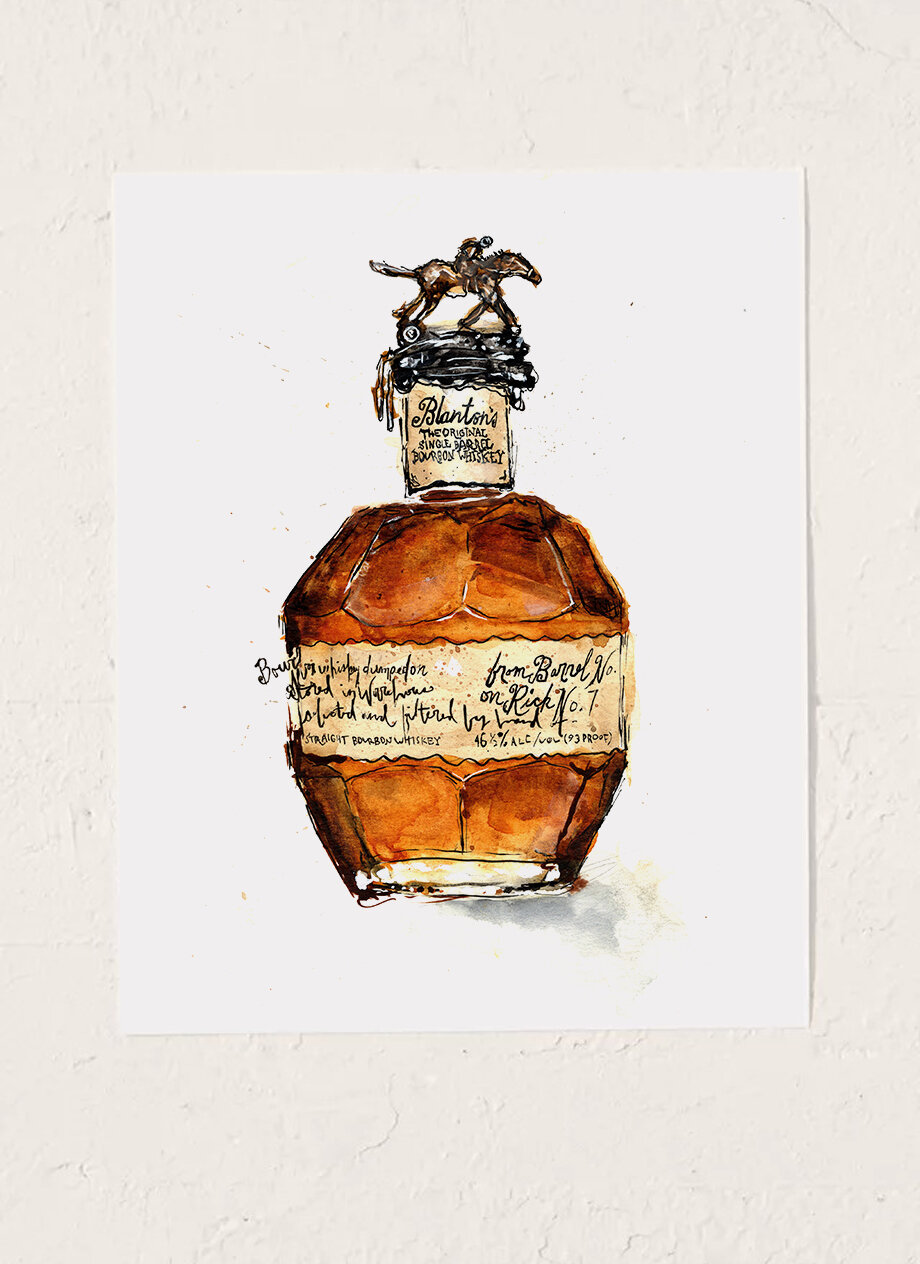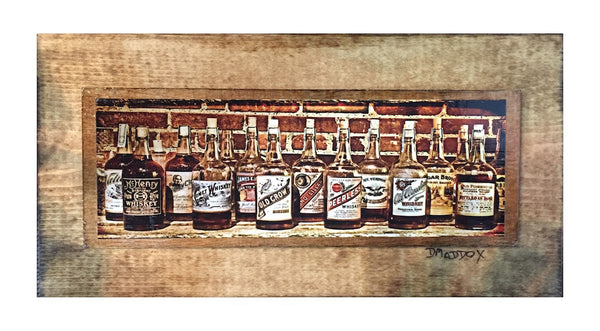Bourbon Art in Contemporary Society: Where Practice Meets Development
Bourbon Art in Contemporary Society: Where Practice Meets Development
Blog Article
Catching the Significance of Bourbon Art With One-of-a-kind Visual Depictions and Styles
The art of bourbon expands beyond the liquid itself, materializing via a selection of graphes that envelop its fabled heritage and craftsmanship. From the precise design of tags that share brand name stories to expressive digital photography that catches the spirit's attraction, each creative expression serves to enhance the consumer's trip. As the industry accepts modern patterns, the dialogue bordering these depictions becomes intricate and progressively rich, hinting at much deeper connections between culture and creative thinking. What remains to be uncovered is just how these evolving styles mirror not only the whiskey itself yet likewise the changing landscape of imaginative interpretation.
The History of Scotch Art

As whiskey manufacturing spread, so as well did the need to boost its experience through art. From the intricate inscriptions on early casks to the fancy tags of modern-day bottles, each element mirrors a distinct imaginative vision, functioning as an aesthetic narrative of the whiskey's heritage.
In the 19th and 18th centuries, the increase of the industrial change additionally enhanced scotch art, resulting in innovative packaging and advertising that caught customer focus. Musicians and developers began trying out with appearances, imbuing whiskey-related imagery with symbolic significances that shared notions of area, craftsmanship, and custom.
Today, bourbon art remains to develop, blending standard methods with contemporary art forms. Realism Art. This continuous dialogue in between the spirit and its visual depiction emphasizes the long-lasting bond in between bourbon and culture, enhancing the overall experience for fanatics worldwide
Iconic Container Layouts
While several elements add to the attraction of bourbon, famous container styles play an essential role fit consumer perception and boosting the general experience. The aesthetic discussion of scotch containers is not just an aesthetic consideration; it functions as a bridge between the customer and the item, evoking emotions and establishing expectations.
Unique shapes, products, and closures can raise a whiskey brand's identity, making it promptly well-known on jampacked shelves. For example, the classic Glenfiddich bottle, with its elegant conical shape, shares a feeling of tradition and craftsmanship, while the vibrant, modern design of the Balvenie container shows technology and class. Furthermore, the use of colored glass or unique textures can suggest the quality and personality of the bourbon within.
Famous layouts usually incorporate elements of social heritage, signifying the brand name's history and connection to its roots. Brands like Jack Daniel's use a straightforward, robust design that reverberates with its American whiskey heritage. Inevitably, the impact of bottle layout extends past simple performance; it encapsulates the essence of the brand name, inviting customers to indulge and check out in the abundant tapestry of bourbon society.
Label Artwork and Branding
Bottle layouts commonly set the stage wherefore consumers can expect, but tag artwork and branding play a similarly significant duty in check out this site interacting a whiskey's identity. The label functions as the first factor of contact in between the product and the customer, encapsulating the significance of the whiskey within its aesthetic components.
Efficient tag art work incorporates typography, shade, and images to develop a story that reverberates with the brand's heritage and target market. A tag featuring elaborate illustrations and classic fonts might evoke a sense of practice try this web-site and workmanship, appealing to aficionados. In comparison, bold colors and modern layout components might attract a younger group looking for technology and exhilaration.


Photography and Visual Storytelling
Catching the significance of whiskey through digital photography and visual narration is an art type that elevates the brand name experience. This tool transcends simple item depiction, diving right into the complex narratives that surround each bottle. By employing compelling imagery, professional photographers can evoke emotions that resonate with consumers, inevitably forging a deeper connection to the whiskey brand name.
Aesthetic storytelling in whiskey photography usually makes use of abundant appearances, lighting, and make-up to highlight the unique features of the spirit. The interplay of light and shadow can accentuate the brownish-yellow shades of bourbon, while the choice of background components-- such as rustic barrels or elegant glass wares-- can reinforce the visit this web-site brand name's heritage or lifestyle organizations.
Additionally, capturing the ritualistic aspects of scotch usage, from the putting to the sampling, welcomes audiences right into a sensory experience, allowing them to picture the tastes and scents that wait for. Each photograph not only showcases the product however additionally narrates of craftsmanship, custom, and the minutes that scotch can boost - Whiskey Art. Therefore, digital photography comes to be an effective tool in articulating the identification of bourbon brands, placing them within the wider cultural landscape
Arising Trends in Scotch Art
The development of scotch art is increasingly formed by contemporary trends that show wider societal changes and consumer choices. One popular trend is the combination of sustainability into art techniques. Artists are now utilizing eco-friendly procedures and recycled products to create whiskey-themed pieces, resonating with eco conscious customers. This change not only highlights the relevance of sustainability however additionally improves the story bordering bourbon manufacturing.
Furthermore, digital art has actually risen in popularity, enabling cutting-edge depictions of bourbon. Musicians are leveraging modern technology to craft immersive experiences, such as enhanced reality installments that engage viewers and offer a deeper understanding of whiskey's cultural value. This trend additionally prolongs to social media platforms, where aesthetically striking content gathers interest and fosters area amongst lovers.
Additionally, partnerships in between scotch brands and musicians are ending up being a lot more widespread. These collaborations produce limited-edition product packaging layouts and special artworks that celebrate both the craftsmanship of whiskey and the imagination of musicians. As whiskey art remains to advance, these emerging fads will unquestionably form its future, promoting a dynamic intersection of culture, sustainability, and innovation within the scotch community.
Conclusion
Finally, the art of scotch encompasses a diverse range of visual representations that mirror its rich heritage and workmanship. From iconic bottle designs and elaborate label art work to compelling digital photography, each aspect adds to a broader narrative that improves the customer's experience. As emerging patterns, such as digital art and sustainability, proceed to form this creative landscape, the complex identity of whiskey stays a withstanding resource of social connection and exploration.

In final thought, the art of scotch includes a varied range of visual representations that mirror its rich heritage and workmanship.
Report this page